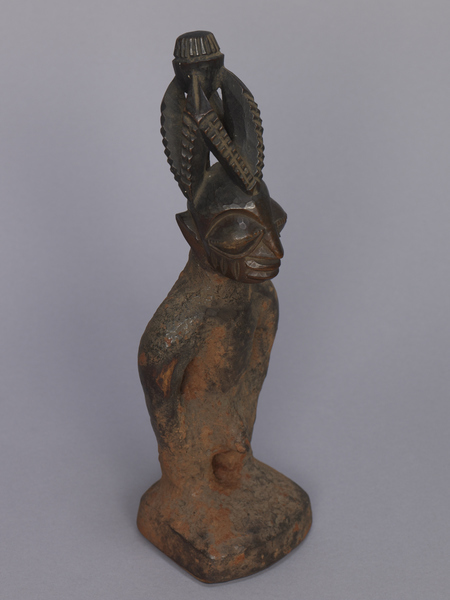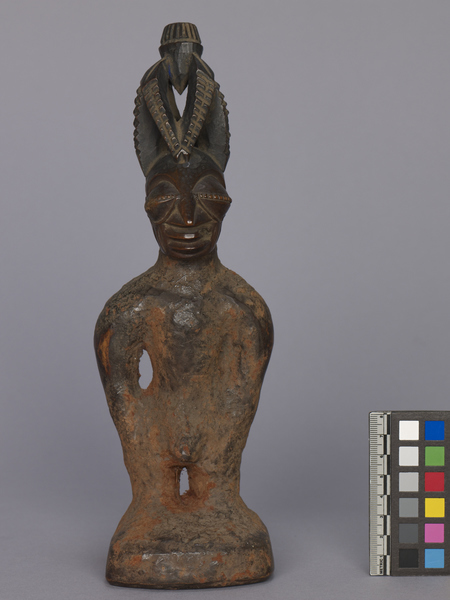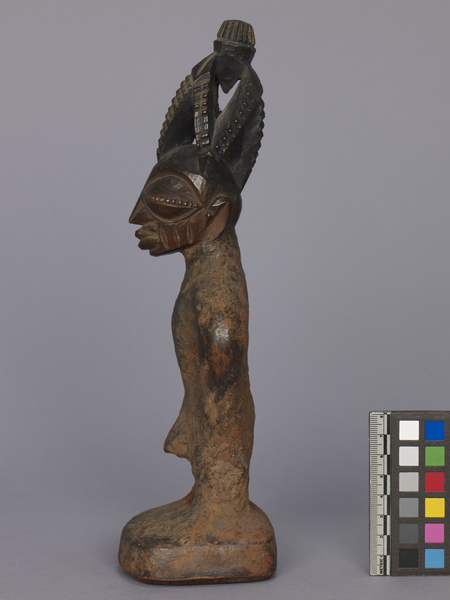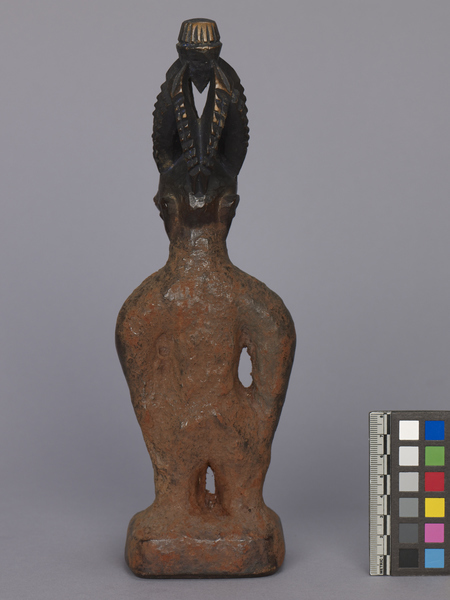Figure Item Number: 3055/6 from the MOA: University of British Columbia




Description
Standing male figure (ibeji) on square base. Wide shouldered male figure stands upright, arms curved to connect with the hips, protruding phallus. Face is stylized and intricately carved, with angular ridged nose, large eyes with carved decoration across centre, three groves down each cheek, and ears that connect with the neck. Headdress is tall, consisting of several joined V shapes that meet at top centre, connecting with a round piece, pointed at bottom, circular and carved at top.
History Of Use
Based on the sacred duality of "twoness" (èjìwàpò) found in nature, such as life/death, right/left, male/female, twins are understood as bringers of wealth and blessings to their family if they are satisfied, or misfortune if they are dissatisfied. As a result, living twins are treated with a high degree of respect and favouritism. When a twin, or both, dies the parents consult a diviner (babalawo), who communicates the desires of the deceased; small commemorative wooden figures (ère ìbejì) are carved to honour and represent them. Yorubas believe that twins share a soul, so the family was to treat the figure as they would if the twin was still physically present. As a result, the twin was fed, washed and cared for. Rather than realistic representations, ère ìbejì are idealized forms. They are often decorated with cowrie shells, beaded or metal bracelets, necklaces, and anklets, and cosmetics, such as osun (camwood powder), indigo, and efun (white chalk). By the mid-19th century, Christianity and Islam began to influence the design of ère ìbejì. Yoruba Muslims sometimes commissioned ere ibeji with carved torah, or leather packets containing quotations from the Quran, while Yoruba Christians incorporated Virgin Mary medals or crucifixes. In the mid-20th century, manufactured or plastic dolls began to replace the traditional ère ìbejì. Today, these dolls, in addition to the use of photographs, continue to sustain the ère ìbejì tradition.
Item History
- Made in Nigeria
- Owned by Alan R. Sawyer before 2002
- Owned by Erika H. Sawyer before April 16, 2014
- Received from Erika H. Sawyer (Seller) and Museum of Anthropology Acquisitions Budget (Funding source) on April 16, 2014
What
Who
- Culture
- Yoruba
- Previous Owner
- Alan R. Sawyer and Erika H. Sawyer
- Received from
- Erika H. Sawyer (Seller) and Museum of Anthropology Acquisitions Budget (Funding source)
Where
- Holding Institution
- MOA: University of British Columbia
- Made in
- Nigeria
When
- Ownership Date
- before 2002 and before April 16, 2014
- Acquisition Date
- on April 16, 2014
Other
- Item Classes
- carvings & sculpture
- Condition
- good
- Accession Number
- 3055/0006